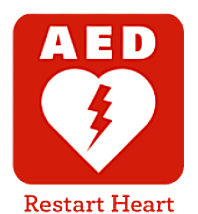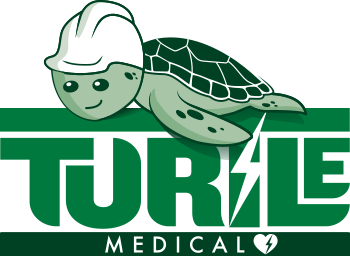
Our guest blog writer this week is First Responder and trainer Jill Bland. She’s been working in the emergency services since 2013 and has been kind enough to give us some insight into cardiac arrests and the need for defibrillators and cabinets.
The question I get asked the most is…
What is a cardiac arrest?
When a cardiac arrest occurs the heart stops beating effectively. Whilst the heart is not beating, toxins build up in the body and the brain. There are approximately 8-10 minutes before this brain damage becomes irreversible. This is why simply waiting for the ambulance to arrive before any treatment is started will not save someone’s life.
Everyone should be taught how to perform CPR as 70% of cardiac arrests occur outside of a hospital environment. Providing effective CPR immediately after sudden cardiac arrest can double someone’s chance of survival.
What use is a defibrillator if an ambulance is coming?
A public defibrillator (defib) is used to detect heart rates that are too slow, too fast and/or irregular. It corrects the heartbeat using an electrical current. 85% of those who suffer a cardiac arrest have the ability for their heart to be shocked back to a normal rhythm by defibrillation. Remember, time is of the essence here.
If the defib does not detect a heartbeat, there will be no shock and CPR is advised – hence the need for both CPR AND a defib.
Where is my nearest defib?
People tend to know where public defibs are because the boxes are bright yellow and stand out. A lot of private clubs now have a defib but it is quite surprising sometimes where they are kept. Sometimes when I am giving a Heartstart Training session I ask the group where their nearest defib is and it is amazing just how many people do not know,
“It’s behind the bar isn’t it?”
“I think John’s got it in his office.”
So, if clubs, pubs, gyms etc have gone to the trouble of getting a defib, why don’t they make it easily accessible AND its location absolutely obvious?
Public defib cabinets tend to be heated (as they are outside), and have a number lock – the code is then given by the 999 operator. Private ones often don’t need to have a lock, but the option is there. Some keep their First Aid box on the top as a one-stop shop, and defib cabinets can store other equipment inside too. For our range, please click here
The quicker CPR is carried out AND a defibrillator used not only improves the chance of a patient’s survival but it can also help to improve the chances of them recovering fully.
